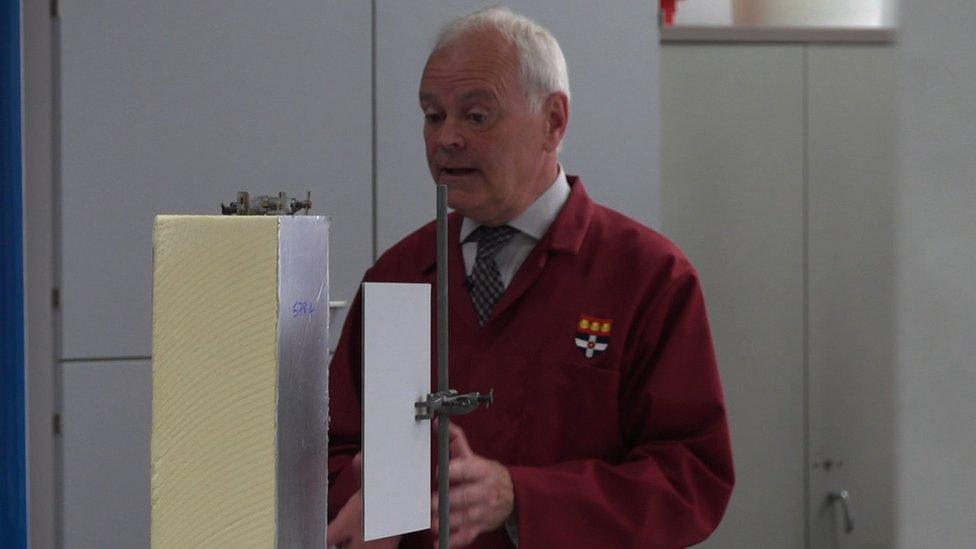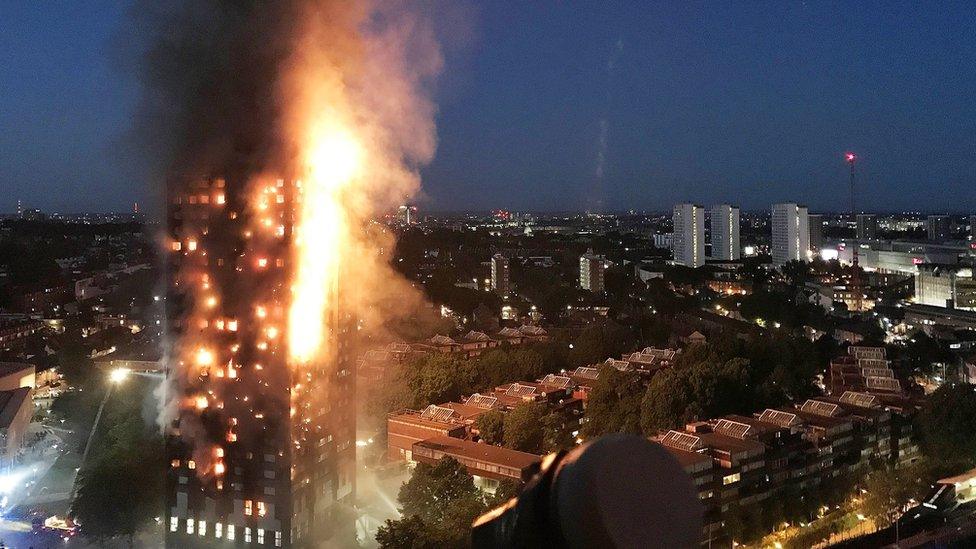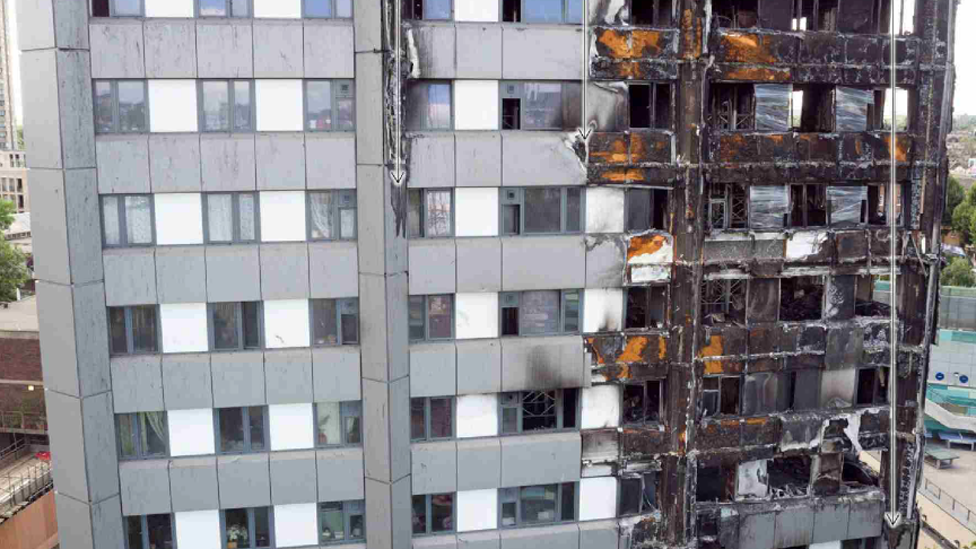Grenfell fire: 'Water may have sped up spread of flames'
- Published
Reading University professor Prof Laurence Harwood carried out an experiment for BBC Inside Out South
A violent chemical reaction between water in Grenfell Tower's insulating foam and its aluminium cladding may explain the speed at which the deadly fire spread, a professor has claimed.
Experiments carried out by Prof Laurence Harwood from the University of Reading suggest moisture from weathering acted as an accelerant.
Prof Harwood said his theory was based on "simple undergraduate chemistry".
He has sent his findings to the Grenfell Tower inquiry.
Up to 80 people are believed to have died in the fire at the 23-storey tower block in north Kensington on 14 June, prompting the BBC to ask Prof Harwood to carry out tests to find out why the flames spread so quickly.
He said his theory seemed to explain why cladding which had passed original fire safety tests failed later ones.
"This would fit in with the weathering over time and absorbing water from rain," he said.
"It is simple undergraduate chemistry. I have discussed it with many of my colleagues and as soon as I mention it they go 'oh of course' - but nobody seems to have thought of it prior to this."

Prof Laurence Harwood from the University of Reading said his theory was based on "simple undergraduate chemistry"
He found that tiny holes in the insulating foam could absorb moisture from general humidity or rainfall. He said in the case of a building fire, this water would be released as steam.
When steam impinges on aluminium at temperatures above 300C it reacts violently and generates large volumes of hydrogen which itself burns and produces more heat and steam, he said.
"Once the aluminium layer has been breached, the inner polyethylene lining will also catch fire, generating further heat and more steam and, when the polyisocyanurate foam eventually catches fire and decomposes, it too will produce steam," Prof Harwood said.
"At this point a runaway sequence of steam reacting with increasingly hot aluminium can begin and the fire will accelerate out of control."

Up to 80 people died in the fire at the 23-storey tower block in north Kensington on 14 June
Prof Harwood acknowledged it seemed counter-intuitive to think water exacerbated the fire.
"In the case of the fire brigade, the amount of water they were pouring onto it would quench the heat rather than set off the reaction," he said.
"But this is steam being pushed onto the aluminium at such a rate it would feed the reaction and not put it out."
Prof Harwood has now sent a letter explaining the theory to Sir Martin Moore-Bick, who is leading the inquiry, and is awaiting a response.
Mayur Patel, head of legal services at the Law Society, said the next stage would see Sir Martin consider the letter and it was "almost certain" he would want to hear evidence from Prof Harwood.
You can see more on Inside Out South on BBC One at 19:30 BST.
- Published27 September 2017

- Published29 October 2019

- Published18 May 2018
